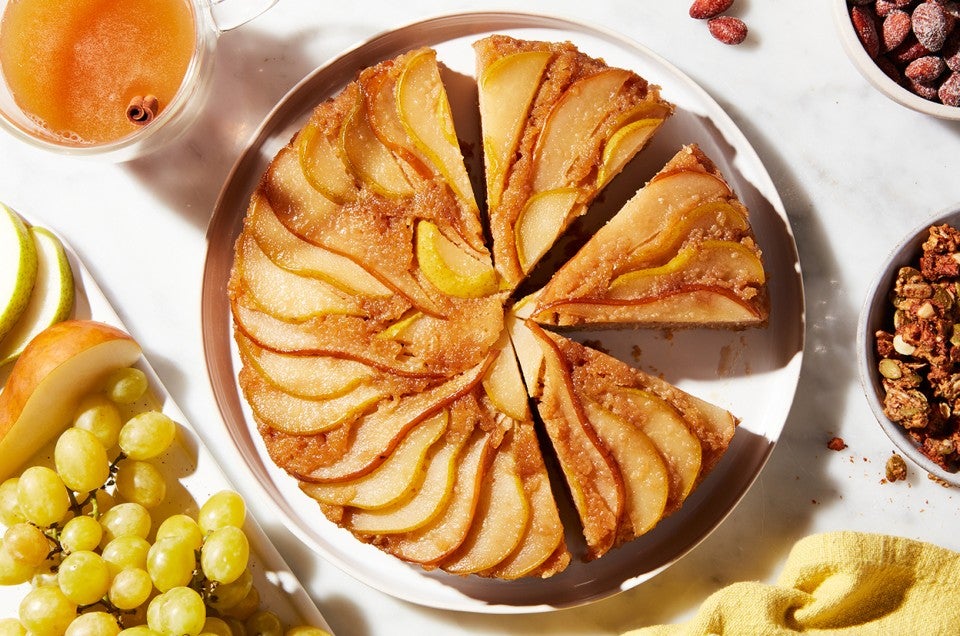
Maple-Pear Upside-Down Cake
This New England twist on the classic upside-down cake, which comes from The Baking School Cookbook, is proof that a 100% whole-grain dessert doesn’t have to compromise on flavor or texture. The hint of spice makes it a perfect dessert from early fall to late spring, and it’s just as good with coffee at breakfast (the maple syrup lends major pancake vibes) as it is with vanilla ice cream or whipped cream for dessert. For a change of pace, try this with your favorite apple variety in the height of fall.





















